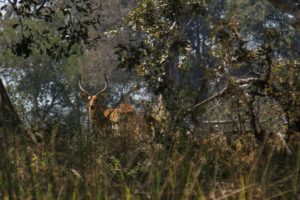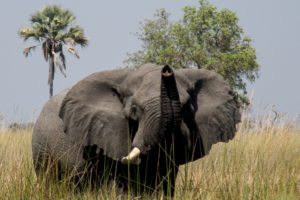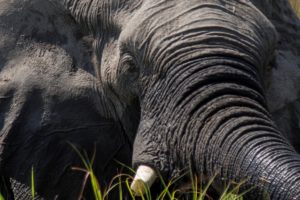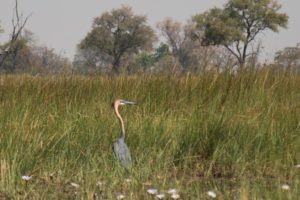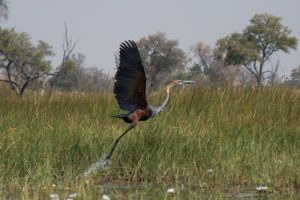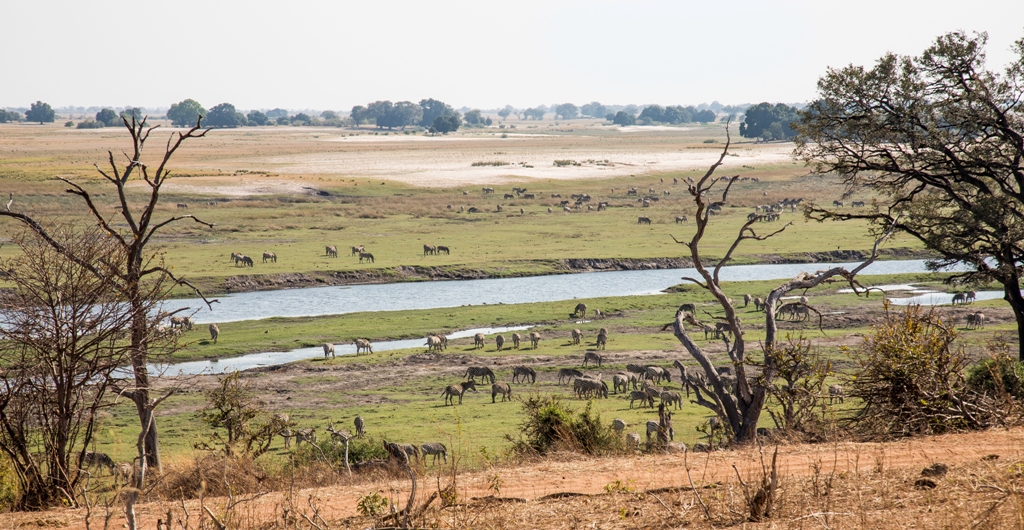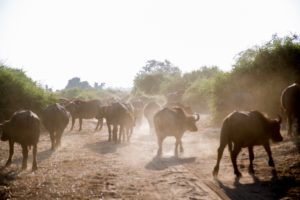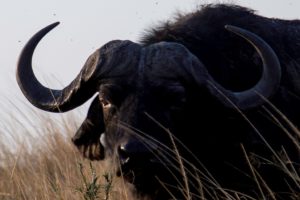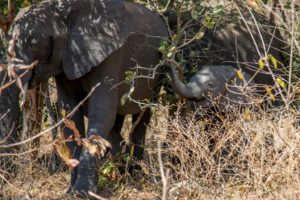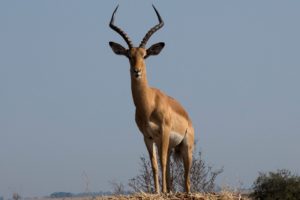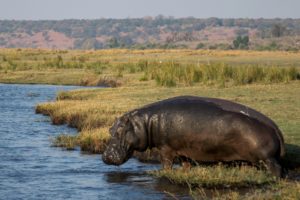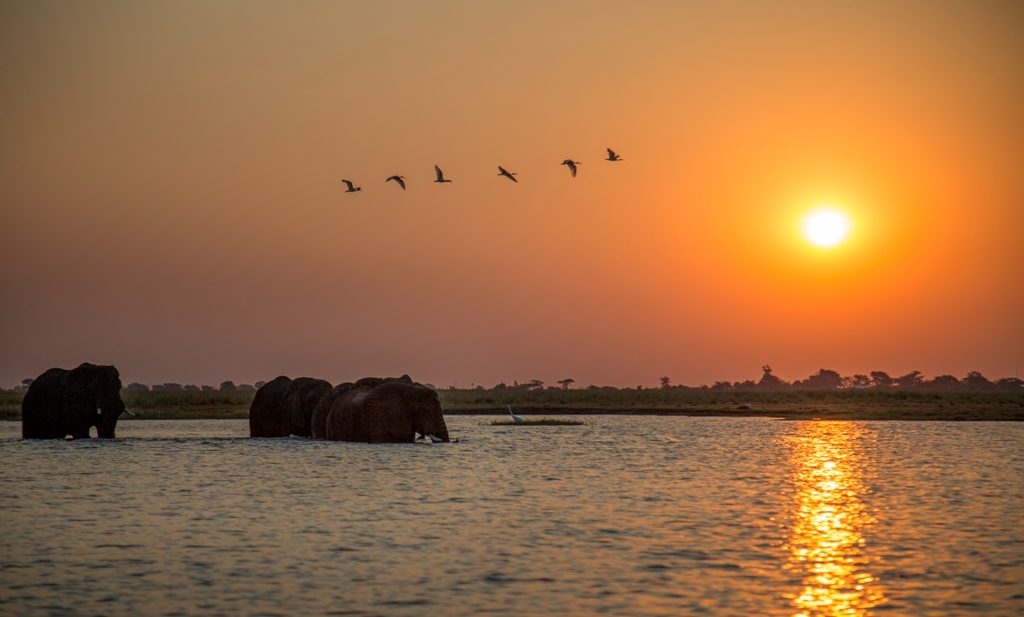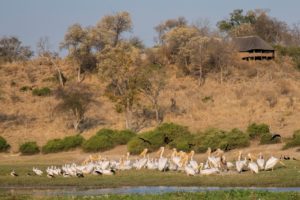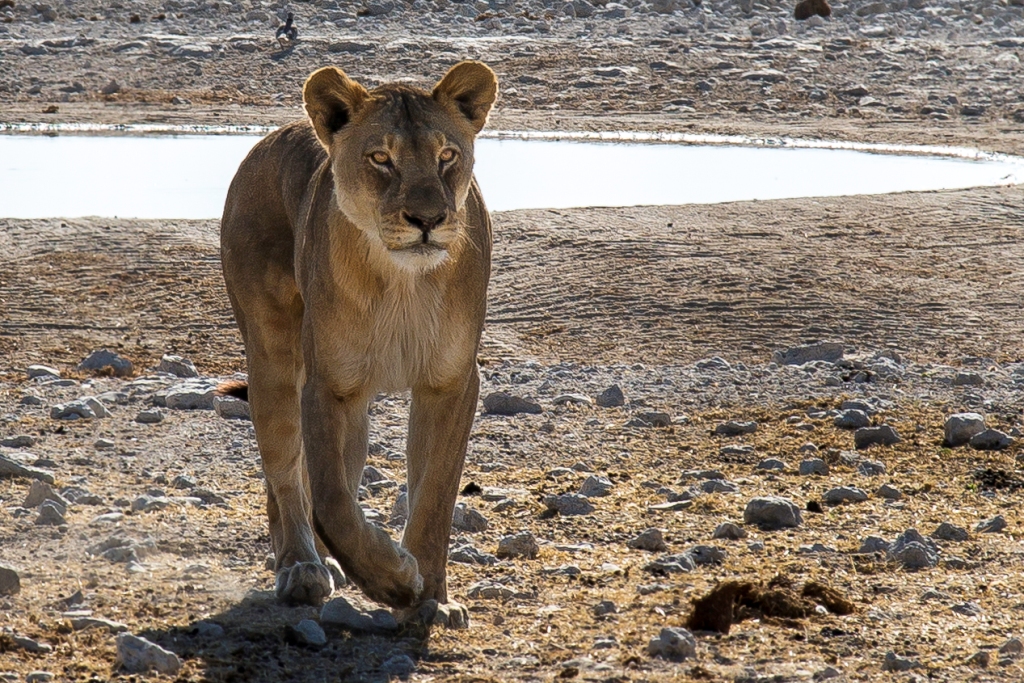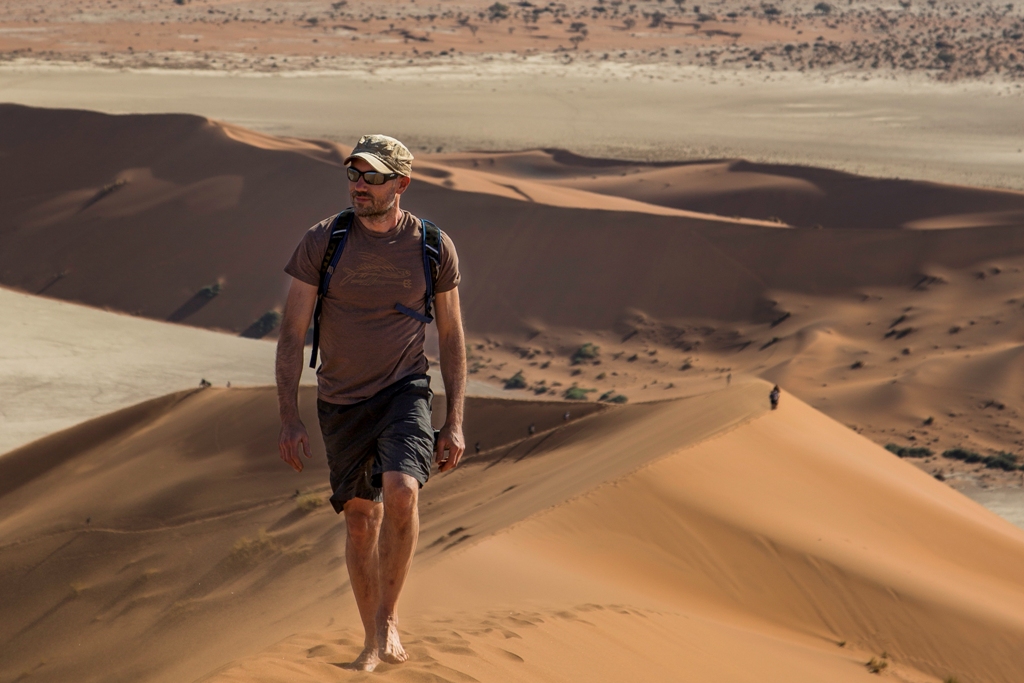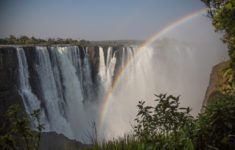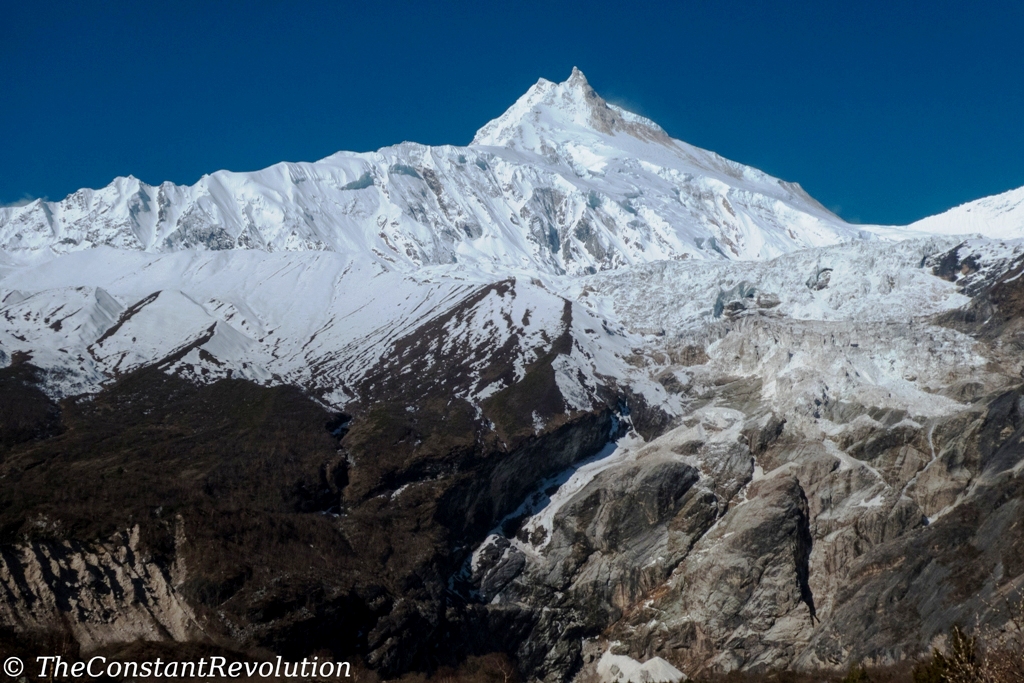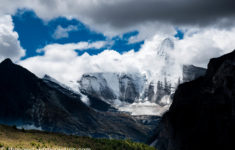Boat and walking safaris in the Okavango Delta, crossing the deep sands of Savuti, game drives in Chobe National Park, and a marvelous boat tour on Chobe River. Botswana is a dream for adventurers, wildlife watchers, and elephants lovers.
This article is part of a series of four, to describe a single travel itinerary that included Namibia, Botswana and Zimbabwe. The whole itinerary lasted three weeks, during which we (myself and four more friends) drove for about 5000 Km (including the game drives), and can be found on this online map.
In the descriptions I’ll add useful information for the specific places. At the bottom of each article I’ll explain the organisation of the whole trip: when to go, renting the car, roads conditions, camping, safety, costs. One important thing right away though: book six months in advance at least, or you risk not finding any accommodation in the best spots, especially inside the national parks, or a good car.
Continues from Etosha and Namibia Wildlife
THE AMAZING OKAVANGO DELTA
We spent less time in Botswana, but I tell you, it was quality time. The country has an elephant population ratio of 1 to 13 inhabitants, which basically means that you see elephants all over the place, in all possible conditions. This in turns means, me happy, I love elephants! I’ll just try not to put only elephants photos on this post 🙂
A day-long drive brought us straight from the Namibian border to Maun, where we rested for the night in an easy going place. We didn’t see much of Maun, just a couple of beers at the bar, good vibes, nothing more to report. The following morning, we went for the third highlight of the trip, and perhaps the most memorable one: a two days boat safari in the Okavango Delta.
Boat Safari
I don’t even know where to start to explain how cool this was. Next time I’ll go for a longer one, even though it was the most expensive activity of this trip (see below), it was worth every Euro! The Okavango Delta is a large swampy area, subject to seasonal flooding, which makes it one of the biggest inland Delta in the world, UNESCO heritage site, and named one of the seven natural wonders of Africa. It’s a heaven for wildlife, for this reason has become a popular tourist destination.
It took us six hours on the boat to go to one of the many islands within the Delta, where we would spend the night. But these are not boring hours. It’s a lot of fun to go through the maze of channels surrounded by elephant grass, and in the meantime you get to see many elephants (from very, very close!) in the water, lots of birds, crocs, and possibly all kind of wildlife, including predators.
Once on the island, campsite is ready for you, and you can just relax, have a drink, and enjoy the nature, far away from everything. Around evening time, our guide took us for a short walking safari, where we saw more elephants, in particular a distant herd fleeing from something that scared them off.
We didn’t approach of course, there might have been a predator, and in any case elephants fleeing are dangerous enough. Back to the campsite we jumped on the boat again, we spotted some hippos, and we went to see the most beautiful sunset (photo above) of the trip, and Africa is famous for its sunsets 😉
After so many days camping and self-cooking, it was nice to have great African food prepared for us by a cook, and eat at a proper table. Our guides and cook were also very nice, and told us some stories, and taught us some receipts. The following morning, after again a great breakfast, we went for another walking safari, a little bit longer.
We saw elephants (of course), a beautiful family of giraffes, some antelopes, and lions’ footprints, but no sign of the cats. Then back on the boat for the six hours rid that would take us back to Maun, with more wildlife watching.
All in all, a super experience, highly recommended! Here’s a series of photos of this Goliath Heron that I like 🙂
HARD DRIVE ACROSS SAVUTI
After a resting night in Maun, the following day we set off towards the Chobe River plains. Here is where some advise is needed. Initially, we wanted to sleep somewhere inside Savuti, or Chobe National Park. However, we started with our bookings too late, and we didn’t find any availability, not for our finances anyways, we were looking for camping spots. So, we had to cross the whole NP in one day, and that’s a long, warm, sandy day.
Deep sand driving skills are essential here, also because the place is very big, and we crossed a few other cars. Getting stuck would be a nightmare, as there is a lot of wildlife around going for a walk is out of discussion.
In any case, everything went fine for us, and we spent the next couple of days at the only place where we found availability inside the national park, Mwandi View. We were lucky, the place is not only beautiful, the owner is also incredibly fun to hang out with. Early in the morning, we could hear lions roaring, although they have been elusive to us, and we didn’t see any during our game drives.
CHOBE RIVER PLAINS’ GAME DRIVES
Now, Botswana game drives and wildlife watching is much different from Namibia’s. Here there are no deserts, and we discovered instead two type of environment: the bush, and the river plains. We went for two game drives along Chobe river plains, passing through both river’s shores and the bush, a little more inland. A very difficult driving, slow with a lot of bumps, sometimes deep sand, but also very charming.
It is somehow harder to spot predators here, as they hide in the bush during the warmer hours. Unfortunately, we heard them but didn’t see them. Instead, we saw a huge heard of water buffaloes: we passed right through the herd with the car, quite emotional. We also saw lots of other animals, and, it goes without saying, elephants!
While at it, we also went for a nice kayaking tour on the river. I am not a particular fun of kayaking, I just find it uncomfortable, but this one was definitely nice, as it allowed us to see some wildlife, mostly birds, from a different perspective.
SPECTACULAR CHOBE RIVER BOAT TOUR
Finally, we arrived in Kasane, our last point in Botswana. Here we left our car, as we entered Zimbabwe with an organised transportation. Not before taking a last look at Chobe River though. We organised a boat tour, which lasted half a day, and it was spectacular! I must say I was sceptical in the beginning, but I had to change my mind.
Thanks to this tour we could see hippos as close as it gets, we were even chased by one, as we went too close to its territory. The boat driver had to open the gas at max power to flee, as the hippo tried to attack the boat, wooouuff! We also saw crocs, lots of birds, antelopes, beautiful views, a great sunset, and, guess what, elephants! 🙂 Always from a different perspective of course!
Quick tip: organise a private boat trip, with a small boat, instead of bigger touristic boats. It really makes the difference in terms of manoeuvrability, you can ask the driver to go wherever you like, and you can get closer to animals.
Here our time in Botswana finished, shorter than Namibia, but as I said at the beginning, high quality!
BIG FIVE 5 AND UGLY 5
It was also the end of our wildlife, game drives experience in Africa for this trip. The first game drives of my life, and I have been marvelled by what we saw. There’s this game about the big five and the ugly five when you go for game drives, how many you spotted and all.
Well, we spotted all of the ugly five: vulture, hyena, marabou, wildebeest, and the warthog. While we saw four of the big five: lions, elephants, rhinos (the black rhino, not the white rhino), buffaloes. The elusive Leopard did not gifted us with an appearance, a good reason to go back to Africa, although Leopards are not only in Africa.
But there’s much more than the big 5 and the ugly 5: all the many different species of antelopes and deer, giraffes, hippos, crocs, monkeys, birds of all kind, zebras, ostrich, all the smaller animals, even insects, all wildlife is beautiful, and in Africa wherever your gaze falls upon, you’ll end up being marvelled. Even when really nothing is moving, the deserts, the sunsets, the wide river plains and the bushes, all of these natural environments are a good reason enough to go to Namibia, Botswana, and many other places that I still have to discover.
To continue reading about the itinerary see Victoria Falls and Crazy Rafting
TRIP ORGANISATION
Some information about the organisation of the whole itinerary.
When to go
No doubts here, the best season for game drives is during the southern hemisphere winter. At this time, the climate is dry, always sunny and quite hot during the day (25 C to 30 C) and coldish during the nights, it could go down to around 5 C. But it depends on the area. Along the coast is colder and more humid, the more you move inland, towards Botswana and then Zimbabwe, the warmer the temperature, also overnight. During the dry season, animals gather around water holes, and it is much easier to see them, especially in Etosha. However, during the day they are more lethargic, for it is too hot.
Camping
It’s possible of course to book resorts, lodges etc. However, besides increasing the costs ten times or more for accommodation, camping in Namibia and Botswana is part of the experience.
I have never seen such beautiful and wild camping area, at the same time very well equipped with warm showers and clean toilets. The best thing of all is the feeling of isolation. In most cases, there’s a lot of space between the designated camping areas, and even when there are other tourists around, it never feels cramped, quite the contrary. Furthermore, excepted inside Etosha, camping area are just open and wild, you can hear the sounds of wildlife during the night, and in a couple of occasions we saw hyena footprints close to our tends.
If that’s scary, you can hire a car with rooftop tends, which are also much easier and quicker to set up. We were in five and we had two rooftop tents for four of us, while I slept in a ground tent all the time. It gets dark pretty soon in the winter season, around 6 PM, so cooking, having a drink, and chatting around a bonfire during the dark hours is another plus for camping, really cool. Finally, the costs, $10 to $15 per person anywhere, while sleeping in lodges and resorts is incredibly more expensive, sometimes several hundreds of dollars per night.
Food, water, fuel
In most cases when camping you’ll have to cook for yourself. Water and food can be bought regularly in small towns here and there. But better to know in advance how many days of provisions you’ll need, and make sure there will be more shops afterwards. In the most touristic areas, like Etosha National Park, there are restaurants too. Camping management can provide wood for the bonfire for a couple of dollars, and in case of need often they sell food too, but it would be more expensive. As for fuel, there aren’t so many stations around, but the tanks of these cars are very big, and often modified to have even more capacity. We could drive for 1,200 Km with a full tank. In this conditions, refilling has not been a problem at all.
Car rental
We did a lot of research before deciding on a car rental company. There’s several in Windhoek, and things to consider beforehand are: the company reputation (check online!), prices, condition of the cars (check everything on site!), unlimited mileage, insurance coverage, number of drivers, tank capacity, equipment included or excluded in the basic price such as spare wheels, rooftop tents, fridge if you are self-cooking, cooking tools, emergency tools etc… it takes a while to check all of this and compare prices. I will not advertise here, but at the end we paid €2,500 in total for 20 days rental, including a pickup fee of €500 as we returned the car in Maun, Botswana. Our itinerary was a one way only.
Roads conditions
All the roads are dirt roads, sometimes really bumpy, sometimes proper off-road driving with huge holes and steep ups and downs (especially in Botswana), sometimes extremely sandy. Driving slow and attentively is imperative, also for the possible passage of wildlife, and particularly at night. Actually, it is much better not to drive at night at all, and it is not permitted inside the parks. We did see people who had accidents, exclusively because they were going too fast and they lost control of the vehicle. Also because you don’t come across other vehicles so often. They destroyed their cars and ruin their fun.
Experience with four wheels, off-road and deep sand driving is quite important as well, particularly in Botswana, even more particularly if you want to cross Savuti Chobe National Park. Lots of sand there, and a very warm and deserted place, getting stuck would be quite dangerous. If you don’t feel confident, then better to go around the south-east and take the normal road to Maun. Unless you are planning to sleep inside the park of course, in which case no choice. We only crossed it in one day.
Safety
I must say that absolutely nothing weird has happened to us, besides the occasional local person who tries to insistently sell you stuff. On the contrary, the locals we got to talk to were very nice and welcoming. However, the car company specifically told us to avoid stopping alongside the road when local people ask for help, as many robberies, sometimes violent ones, have been happening by using this trick. We didn’t come across any such situation. In general, we frequented camping areas and touristic places, feeling very safe. Some attention, as everywhere in the world needs to be paid in cities, such as Windhoek or Swakopmund.
Costs
I believe we managed to keep the costs as low as it gets, considering the number of wonderful places we visited and the experiences we had. The total cost per person for the whole three weeks trip amounted to about €3,000. This included: return flight from Europe to Johannesburg, one way flight from Johannesburg to Windhoek, one way flight from Victoria Falls to Johannesburg, as it was a one way itinerary; renting of the car (5 people for a car that carries 5 people), and fuel; all accommodations (mostly camping), and all daily expenses such as food, water, snacks, including few restaurants; all national parks entry fees; and all extra activities and tours. Tours included: sand boarding or quad driving in Swakopmund, a marvellous two-days boat safari in the Okavango Delta (about €200 per person), a boat tour and a kayak tour in Chobe River NP, and an amazing rafting on the Zambesi river in Zimbabwe. Not bad huh?

Viva the transparency! There are affiliate links in this article. This means if you click on a link and end up buying (or booking) through those websites, I’ll get a small commission, at no extra cost to you. This helps me maintain the blog, and continue to provide (hopefully) useful travel information. I advertise only products I have tested and sites I use myself!


